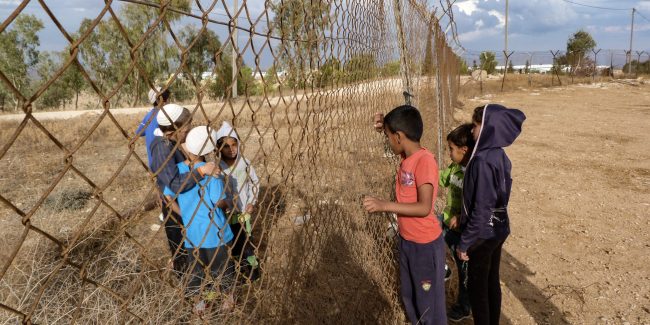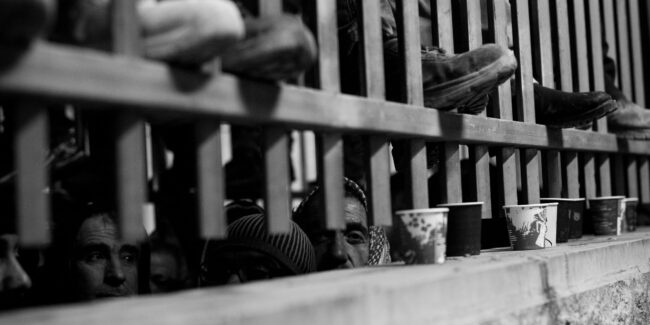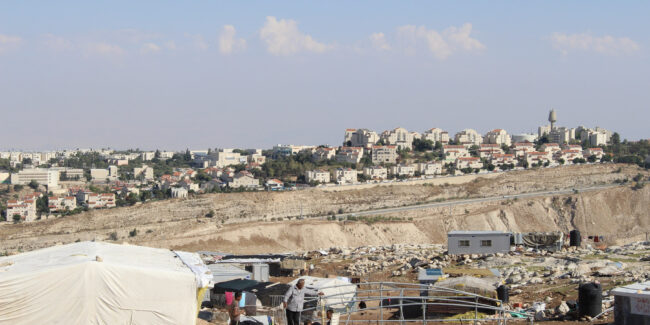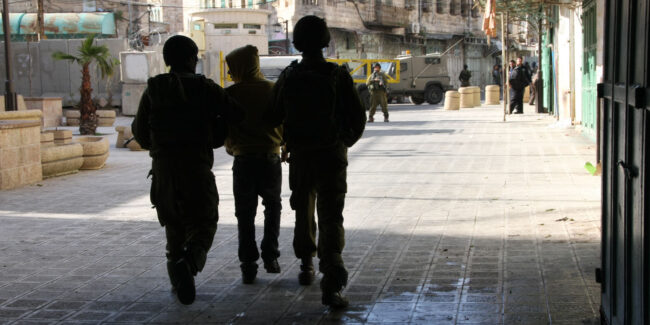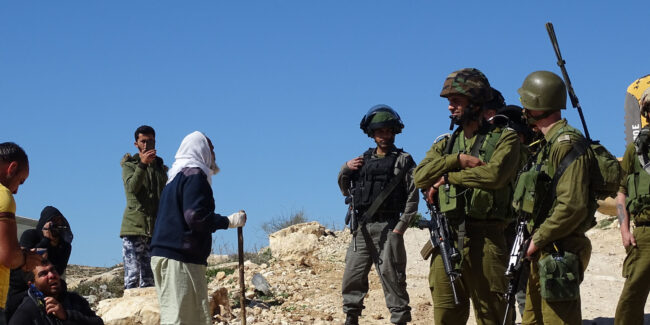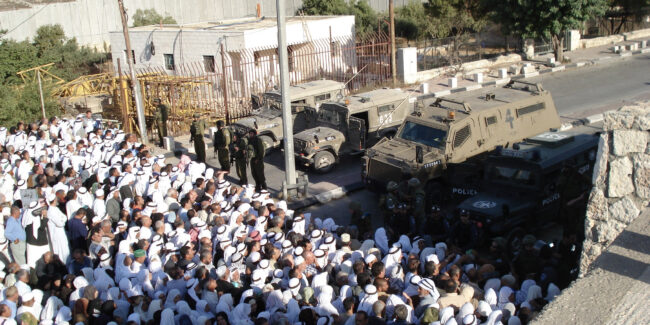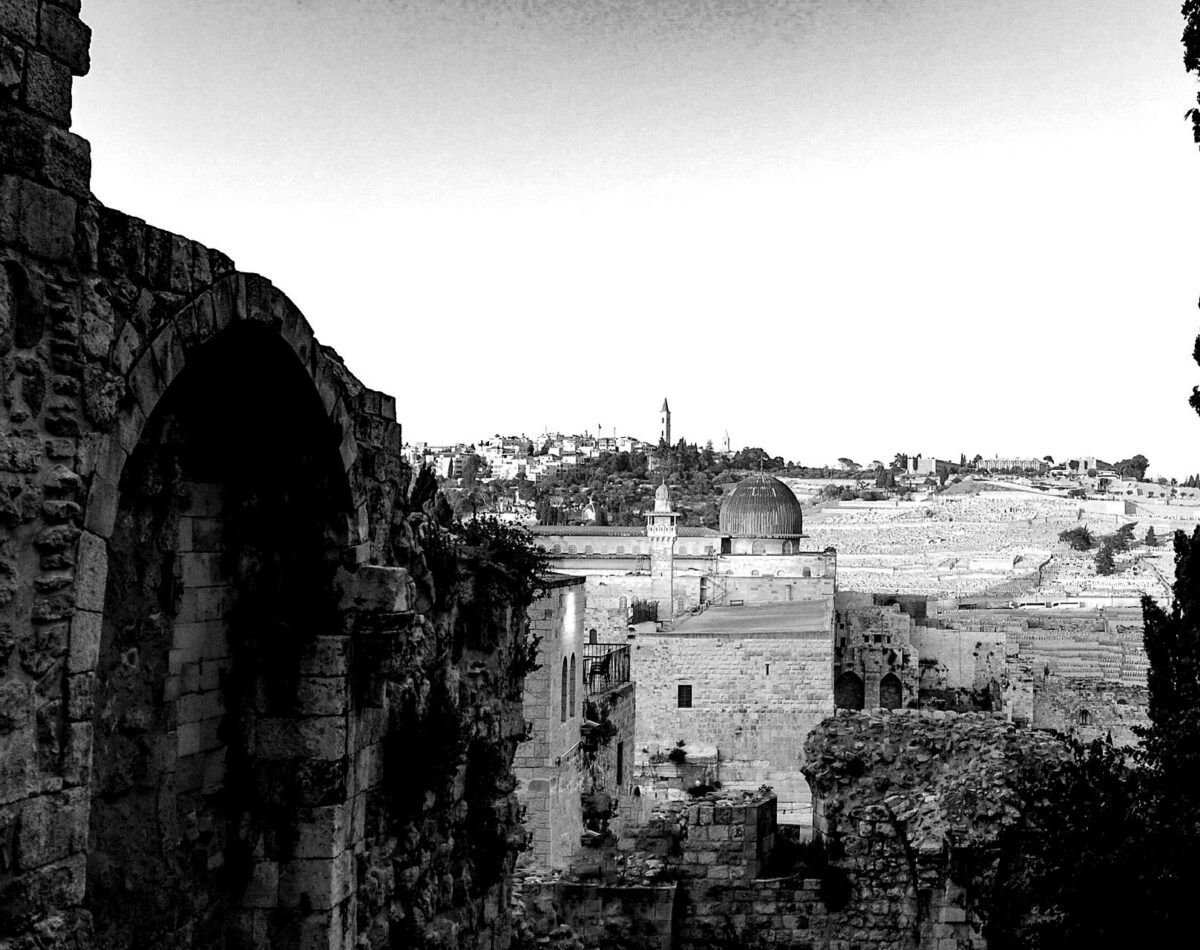
1917
The Balfour Declaration
The British Foreign Secretary Lord Balfour announced the British government’s support for the establishment of a national homeland for the Jewish people in Palestine
The Balfour Declaration was a public letter issued by the British government in 1917. It is regarded as a key factor in setting in motion the creation of the State of Israel.
‘His Majesty’s government view with favour the establishment in Palestine of a national home for the Jewish people, and will use their best endeavours to facilitate the achievement of this object, it being clearly understood that nothing shall be done which may prejudice the civil and religious rights of existing non-Jewish communities in Palestine, or the rights and political status enjoyed by Jews in any other country.’
Learn more from Makan
1917
The Balfour Declaration
The British Foreign Secretary Lord Balfour announced the British government’s support for the establishment of a national homeland for the Jewish people in Palestine
The Balfour Declaration was a public letter issued by the British government in 1917. It is regarded as a key factor in setting in motion the creation of the State of Israel.
‘His Majesty’s government view with favour the establishment in Palestine of a national home for the Jewish people, and will use their best endeavours to facilitate the achievement of this object, it being clearly understood that nothing shall be done which may prejudice the civil and religious rights of existing non-Jewish communities in Palestine, or the rights and political status enjoyed by Jews in any other country.’
Learn more from Makan
1923-1948
The British Mandate
The beginning of colonial rule
Following the collapse of the Ottoman Empire at the end of the First World War, European colonial powers began carving up the Middle East. Britain assumed control over Palestine, and the colonial British Mandate of Palestine began. Jewish immigration – which had been increasing since the end of the 19th century in response to the development of Zionism, a political and nationalist movement to create a new homeland for the Jewish people in Palestine – rose again during the 1930s and 1940s as Jewish refugees sought to escape Nazi persecution in Europe. Tensions and violence continued during this time between the majority Palestinian community, the minority Jewish community, and the colonial ruler Britain.
Learn more from Makan
1923-1948
The British Mandate
The beginning of colonial rule
Following the collapse of the Ottoman Empire at the end of the First World War, European colonial powers began carving up the Middle East. Britain assumed control over Palestine, and the colonial British Mandate of Palestine began. Jewish immigration – which had been increasing since the end of the 19th century in response to the development of Zionism, a political and nationalist movement to create a new homeland for the Jewish people in Palestine – rose again during the 1930s and 1940s as Jewish refugees sought to escape Nazi persecution in Europe. Tensions and violence continued during this time between the majority Palestinian community, the minority Jewish community, and the colonial ruler Britain.
Learn more from Makan
1947-1948
The UN Partition Plan
Leading up to the creation of the State of Israel
In 1947, the UN proposed a Partition Plan to divide up the land in Palestine between the Jewish and Palestinian populations. The plan never came into existence following criticism that the proposed division disproportionately disadvantaged the majority Palestinian community. The Jewish community in Palestine unilaterally declared their independence from British colonial rule and the creation of the State of Israel in 1948. This declaration led to violent conflict and the start of the Arab-Israeli war between Israel and the surrounding nations.
Over 750,000 Palestinians became refugees during this time in what is known in Palestine as the ‘Nakba’, meaning ‘catastrophe’. The armistice line at the end of the war became known as the ‘Green Line’ and served as the de facto borders of the new State of Israel until 1967.
Learn more from Makan
1947-1948
UN Partition Plan
Leading up to the creation of the State of Israel
In 1947, the UN proposed a Partition Plan to divide up the land in Palestine between the Jewish and Palestinian populations. The plan never came into existence following criticism that the proposed division disproportionately disadvantaged the majority Palestinian community. The Jewish community in Palestine unilaterally declared their independence from British colonial rule and the creation of the State of Israel in 1948. This declaration led to violent conflict and the start of the Arab-Israeli war between Israel and the surrounding nations.
Over 750,000 Palestinians became refugees during this time in what is known in Palestine as the ‘Nakba’, meaning ‘catastrophe’. The armistice line at the end of the war became known as the ‘Green Line’ and served as the de facto borders of the new State of Israel until 1967.
Learn more from Makan
1967
Six Day War
The occupation of Palestine
Following the establishment of the State of Israel, Palestinians began mobilising, forming a resistance movement to return to their homeland. In 1964, the Arab League formed the Palestine Liberation Organization (PLO). In response to increasing tensions, Israel launched a pre-emptive strike against neighbouring countries in 1967, marking the beginning of the Six Day War, fought from 5-10 June between Israel and the states of Jordan, Syria, and Egypt.
Over the course of six days, Israel expanded its territory beyond the Green Line and occupied the West Bank, including East Jerusalem, Gaza, the Golan Heights and the Sinai. By 1981, Israel had formally annexed both East Jerusalem and the Golan Heights, a move the majority of the international community rejects.
Learn more from Makan
1967
The Six Day War
The occupation of Palestine
Following the establishment of the State of Israel, Palestinians began mobilising, forming a resistance movement to return to their homeland. In 1964, the Arab League formed the Palestine Liberation Organization (PLO). In response to increasing tensions, Israel launched a pre-emptive strike against neighbouring countries in 1967, marking the beginning of the Six Day War, fought from 5-10 June between Israel and the states of Jordan, Syria, and Egypt.
Over the course of six days, Israel expanded its territory beyond the Green Line and occupied the West Bank, including East Jerusalem, Gaza, the Golan Heights and the Sinai. By 1981, Israel had formally annexed both East Jerusalem and the Golan Heights, a move the majority of the international community rejects.
Learn more from Makan
1987-1993
The First Intifada
A mass non-violent drive for freedom
As the Israeli military occupation continued through the 1970s and 1980s, so did the Palestinian drive for freedom and self-determination. A mass, non-violent popular uprising, known as the First Intifada, began in 1987 during which Palestinians demanded an end to the occupation and the creation of a Palestinian state. The uprising ended following a strict Israeli crackdown.
Learn more from Makan
1987-1993
The First Intifada
A mass, non-violent drive for freedom
As the Israeli military occupation continued through the 1970s and 1980s, so did the Palestinian drive for freedom and self-determination. A mass, non-violent popular uprising, known as the First Intifada, began in 1987 during which Palestinians demanded an end to the occupation and the creation of a Palestinian state. The uprising ended following a strict Israeli crackdown.
Learn more from Makan
1993-1995
The Oslo Accords
The peace process that never was
The signing of the Oslo Accords marked the beginning of the Oslo Peace Process, led by Israeli Prime Minister Yitzhak Rabin and leader of the Palestinian Liberation Organization, Yasser Arafat. The Accords set up a new autonomous Palestinian administration, the Palestinian Authority (PA), which was to take control of certain areas of the West Bank.
The West Bank was divided into Areas A, B and C. Area A was placed under the military and civil control of the PA, Area B was placed under joint PA and Israeli military control and Area C, comprising more than 60% of the West Bank, was placed under full Israeli military and civil control. This division was supposed to be an interim measure lasting no more than 5 years, after which point the PA was to gain jurisdiction over the entire West Bank in order to establish a Palestinian State. However, this process was not completed and the Areas A, B and C regime continues to this day.
Learn more from Makan
1993-1995
The Oslo Accords
The peace process that never was
The signing of the Oslo Accords marked the beginning of the Oslo Peace Process, led by Israeli Prime Minister Yitzhak Rabin and leader of the Palestinian Liberation Organization, Yasser Arafat. The Accords set up a new autonomous Palestinian administration, the Palestinian Authority (PA), which was to take control of certain areas of the West Bank.
The West Bank was divided into Areas A, B and C. Area A was placed under the military and civil control of the PA, Area B was placed under joint PA and Israeli military control and Area C, comprising more than 60% of the West Bank, was placed under full Israeli military and civil control. This division was supposed to be an interim measure lasting no more than 5 years, after which point the PA was to gain jurisdiction over the entire West Bank in order to establish a Palestinian State. However, this process was not completed and the Areas A, B and C regime continues to this day.
Read more about the events
2000-2005
The Second Intifada
A violent uprising
After the five year deadline for Israel to withdraw its military from the West Bank had passed, a second, non-violent uprising began in 2000. It quickly turned violent with some Palestinians, largely led by Hamas, carrying out suicide bombings against civilians in Israel. Around 1000 Israelis and 3000 Palestinians lost their lives during the Second Intifada. Once again, the uprising was suppressed by the military.
Learn more from Makan
2000-2005
The Second Intifada
A violent uprising
After the five year deadline for Israel to withdraw its military from the West Bank had passed, a second, non-violent uprising began in 2000. It quickly turned violent with some Palestinians, largely led by Hamas, carrying out suicide bombings against civilians in Israel. Around 1000 Israelis and 3000 Palestinians lost their lives during the Second Intifada. Once again, the uprising was suppressed by the military.
Learn more from Makan


